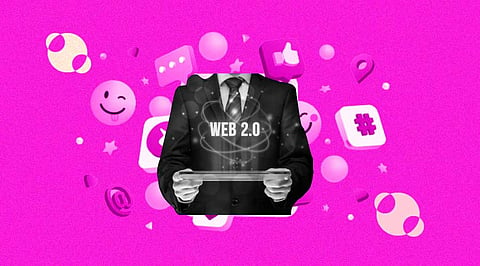


At this point, we all know there are some issues associated with Web2 social media. Data leaks, such as the one experienced by 533 million Facebook users across 106 countries, have exposed vast amounts of personal information. Then, control of content – or lack of it – is another drawback. Creators opening an account with Instagram must allow it to "use, distribute, modify, run, copy, publicly perform or display, translate and create derivative works" of their content. Feeds curated by platform algorithms are increasing bias and polarization. But now Web3 is all set to change the all the issues people are facing with Web2 social media. Social media is big in understanding Web2, but it's also big in understanding a lot of the promises of Web3. The backbone of social media is the idea that you log onto a site to see user-generated content, with the user receiving no reward. Instead, the reward goes to the website that made that content discoverable. Web 3.0 is currently picking up steam in the online space. Its rising popularity is proportionate to that of blockchain and the security technology's broad acceptance and adoption.
Now we should move on to the next generation of the internet, which is currently in use worldwide. Web 2.0 has revolutionized the web and its allied industries. This web version has made it exceedingly simple for users to collect, generate, and distribute huge amounts of data with just one click. Hundreds of new apps are introduced to the phone's app store every day. Also, phones have a built-in camera that produce images that are most genuine cameras on the Web 1 could not even imagine a few years ago. The best feature of Web 2.0 is that it allows users to create content and distribute it on global networks. Social media channels such as Instagram and Facebook and other video streaming applications, blog posting, podcasts, and social bookmarking are all examples of Web 2.0 platforms. This period is also known for the ease with which music and video snippets are shared.
Centralization has helped onboard billions of people to the World Wide Web and created the stable, robust infrastructure on which it lives. At the same time, a handful of centralized entities have a stronghold on large swathes of the World Wide Web, unilaterally deciding what should and should not be allowed. Web3 is the answer to this dilemma. Instead of a Web monopolized by large technology companies, Web3 embraces decentralization and is being built, operated, and owned by its users. Web3 puts the power in the hands of individuals rather than corporations.
BAAS: BAAS, which stands for Brands as a Service, is a brand-new trend in blockchain technology. It is a cloud-based service that enables customers to work with the blockchain to create digital products. It is a regulated industry and for businesses and consumers to interact with these financial services they need to gain access to banks.
Flux: Flux is the trustless data layer for web3. Flux is a cross-chain oracle that provides smart contracts with access to economically secure data feeds on anything. With the help of Flux, one can develop Web 3.0 applications and decentralized projects.
The Semantic Web: The term "Semantic Web" refers to W3C's vision of the Web of linked data. The Semantic Web involves web principles, that are extended from documents to data, like that of a data web.
NFT's will Power up the Web 3.0 Movement: The primary element to boost the Web3 movement is non-fungible tokens, the digital collectibles transacted with cryptocurrency. It will also lay the foundation for creators to associate with their users like never before.
Low Code Application Building Software: Low-code development is a visual drag-and-drop technique for development that enables enterprises to build applications considerably faster and with less hand-coding. As Web 3.0 has stepped in, the trend of wiping out the low-code or no-code app creations has sprung up.
